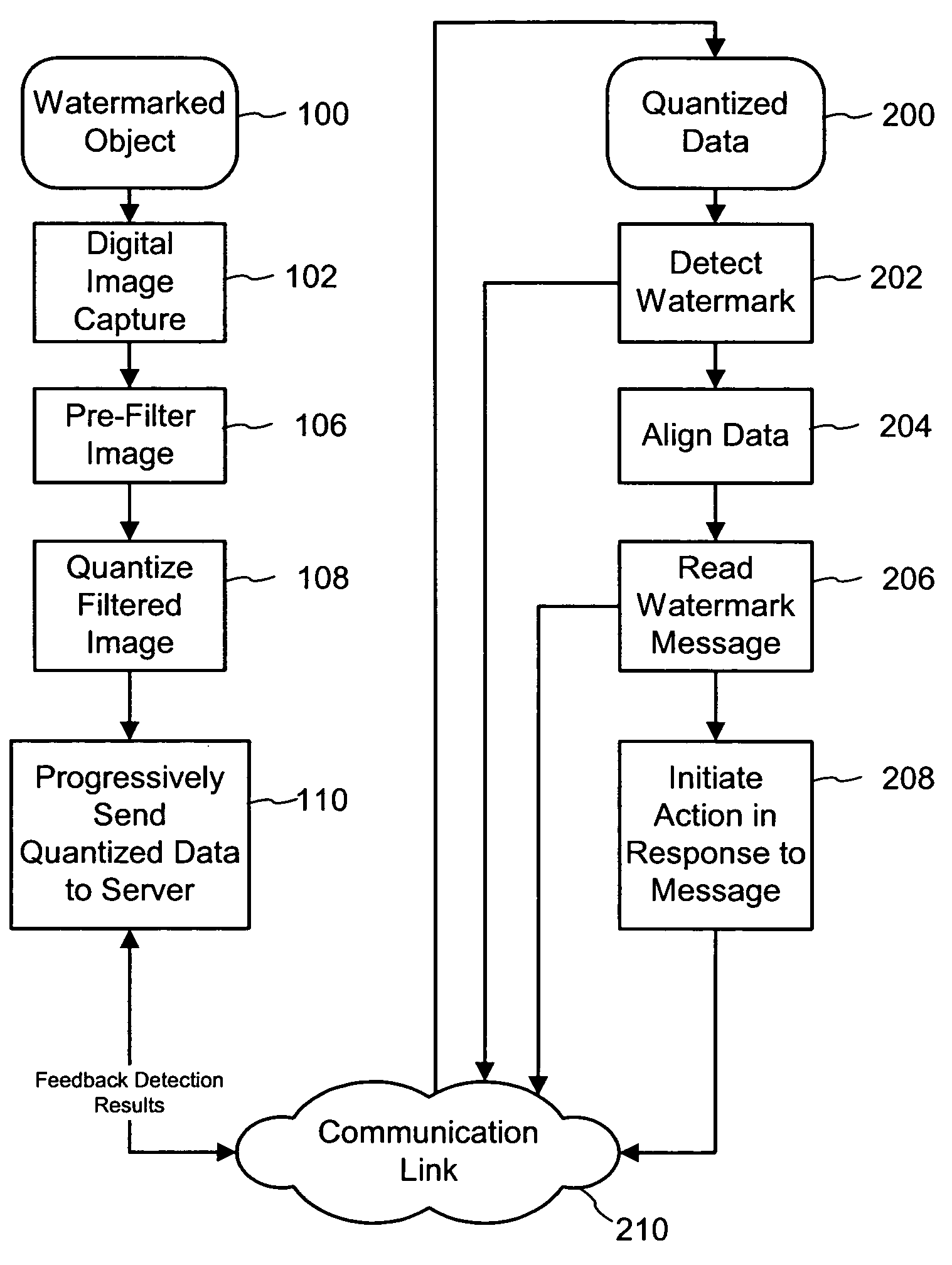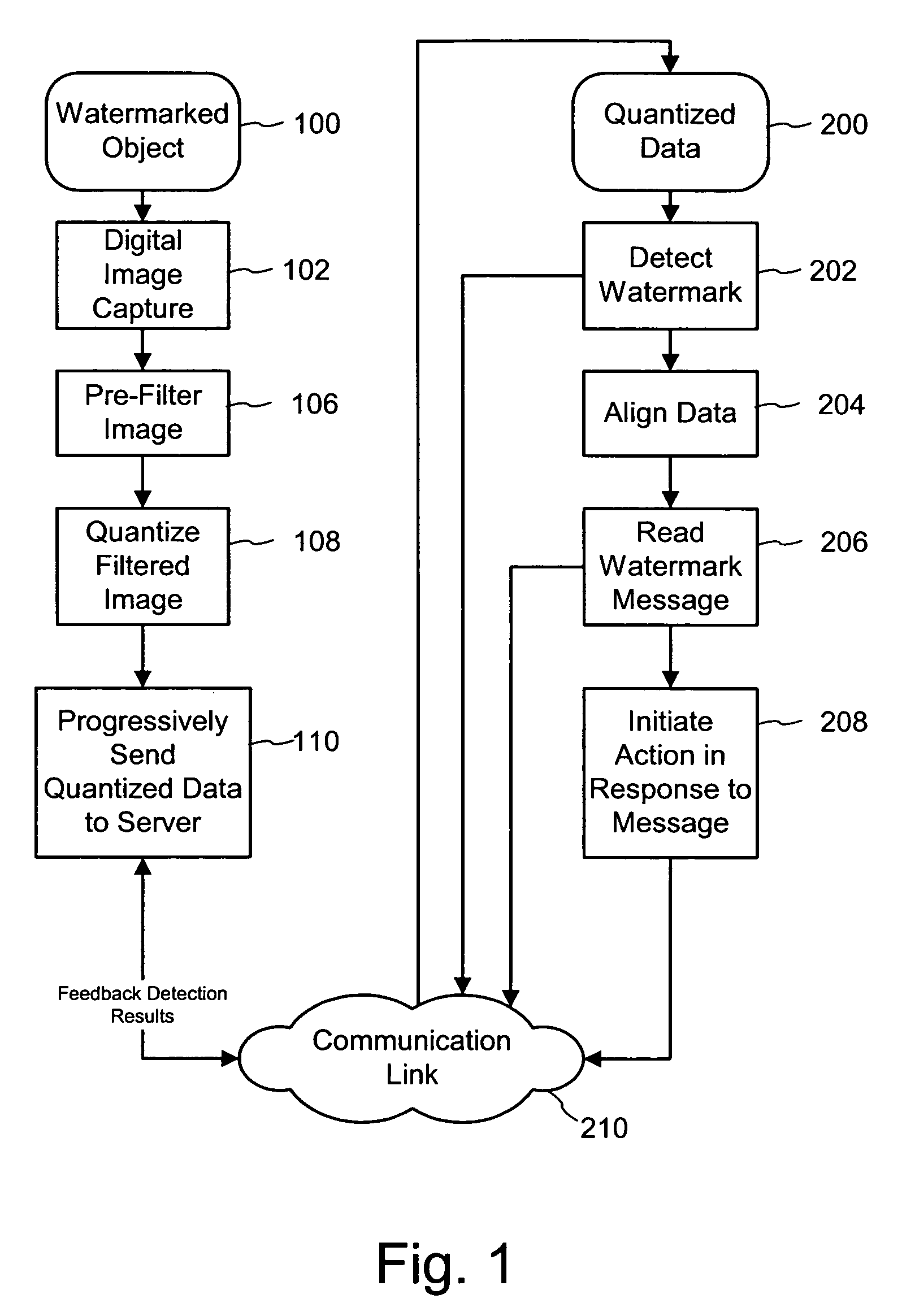Progressive watermark decoding on a distributed computing platform
a distributed computing platform and watermark decoding technology, applied in image watermarking, digital transmission, instruments, etc., can solve the problems of the computational complexity of the decoding process, and achieve the effect of reducing bandwidth requirements
- Summary
- Abstract
- Description
- Claims
- Application Information
AI Technical Summary
Benefits of technology
Problems solved by technology
Method used
Image
Examples
Embodiment Construction
[0015]FIG. 1 is a diagram illustrating a progressive watermark decoding process for a distributed computing platform. The watermark decoding process scans a digital image of a watermarked object. An image printed on the watermarked object carries a hidden digital watermark with a variable multi-bit message payload as well as a synchronization signal component. The digital watermark subtly modifies image sample values in a particular color channel of a host digital image up or down to encode the message and synchronization components. This digital image is then printed or engraved onto the surface of a physical object, such as paper, product packaging, ID cards etc. A consumer then holds the object to a web camera, which captures digital image frames of the watermarked object (100). A watermark decoding process detects the presence of the watermark, including synchronizing with the embedded synchronization component, and extracts the multi-bit message component. This message carries ...
PUM
 Login to View More
Login to View More Abstract
Description
Claims
Application Information
 Login to View More
Login to View More - R&D
- Intellectual Property
- Life Sciences
- Materials
- Tech Scout
- Unparalleled Data Quality
- Higher Quality Content
- 60% Fewer Hallucinations
Browse by: Latest US Patents, China's latest patents, Technical Efficacy Thesaurus, Application Domain, Technology Topic, Popular Technical Reports.
© 2025 PatSnap. All rights reserved.Legal|Privacy policy|Modern Slavery Act Transparency Statement|Sitemap|About US| Contact US: help@patsnap.com


